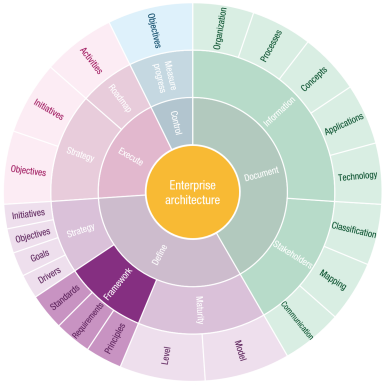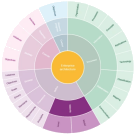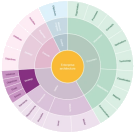Frameworks can mean several things. In the context of this step of the method, the word framework refers to dealing with basic (or core) principles, requirements, and standards. This step is about developing these basic principles, requirements, and standards.
Most organizations have a vision and a mission, elaborate or not. Sometimes an organization is even more advanced and has a strategy in the form of elaborated drivers. This is a good starting point for developing the framework. Drivers, goals and objectives often lead to the development and creation of basic principles. These principles, in turn, result in requirements and standards.

Framework ground rules
When establishing the basics, it is important to avoid going into too much detail. In particular, make sure that there is a clear description of the principles and their requirements. The best results are achieved by describing the principles and requirements in the language of the organization. In other words, stay away from the more static language of Enterprise Architecture and use the language of the organization. Describe the principles and requirements in a way that everyone in the organization can read and understand.
Basic principles are used to establish high-level frameworks that can be applied to all types of topics and issues facing an organization. In short, they serve as tools to provide structure and direction to a wide variety of issues. Thus, basic principles can be thought of as guardrails on a highway.
Stakeholder involvement
To ensure adoption of the principles, it is advisable to involve stakeholders in the process of defining the principles. This can be achieved by organizing workshops in which stakeholders can participate. By actively involving stakeholders in the process, the principles become more of a collaborative effort rather than something that feels imposed.
Architecture artifacts and deliverables
Within the context of the framework there is one architecture artifact that can be created.


